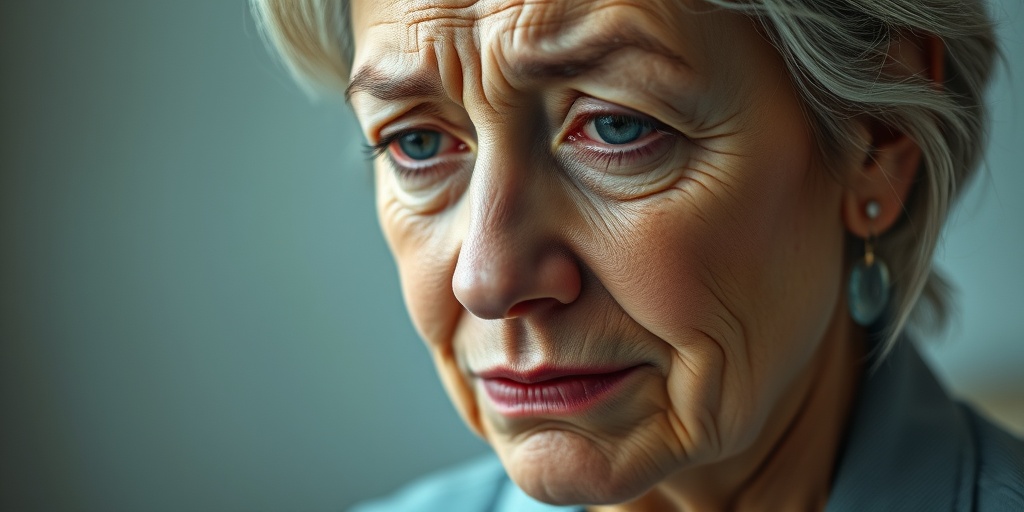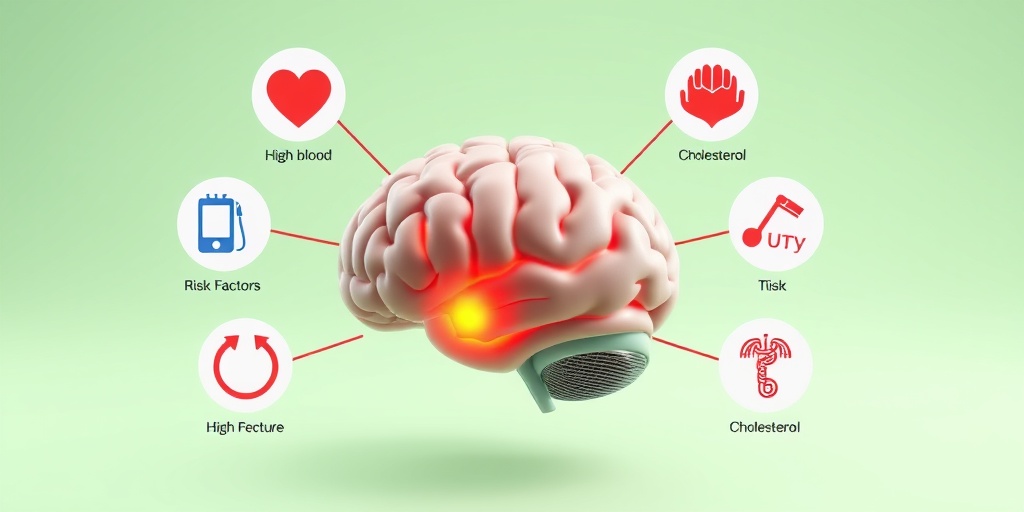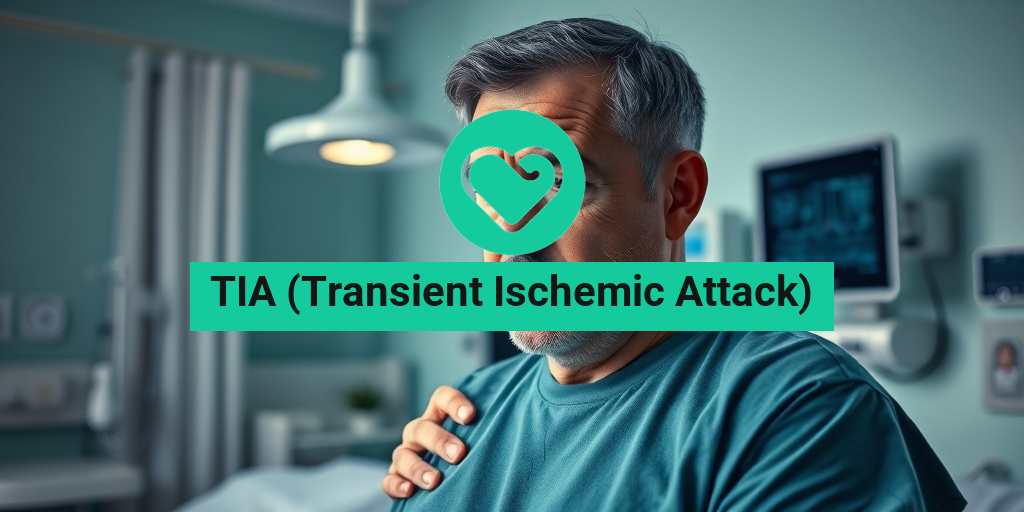What Is TIA?
A Transient Ischemic Attack (TIA), often referred to as a “mini-stroke,” is a temporary period of symptoms similar to those of a stroke. It occurs when there is a temporary decrease in blood supply to part of the brain. Unlike a full-blown stroke, the effects of a TIA are short-lived, typically lasting only a few minutes to a few hours, and do not cause permanent damage. However, a TIA is a serious warning sign that a person is at a higher risk of having a stroke in the future.
Understanding the Causes of TIA
The primary cause of a TIA is the same as that of a stroke: a blockage in the blood vessels supplying the brain. This blockage can be due to:
- Blood clots: These can form in the arteries leading to the brain or can travel from other parts of the body.
- Fatty deposits: Atherosclerosis, or the buildup of fatty deposits in the arteries, can restrict blood flow.
- Heart conditions: Certain heart conditions, such as atrial fibrillation, can lead to the formation of clots that may travel to the brain.
Risk Factors for TIA
Several factors can increase the likelihood of experiencing a TIA, including:
- Age: The risk increases with age, particularly for those over 55.
- High blood pressure: Uncontrolled hypertension is a significant risk factor.
- Diabetes: This condition can damage blood vessels and increase the risk of clots.
- Smoking: Tobacco use can damage blood vessels and reduce oxygen in the blood.
- High cholesterol: Elevated cholesterol levels can lead to atherosclerosis.
TIA Symptoms
Recognizing the symptoms of a TIA is crucial, as prompt medical attention can help prevent a full stroke. The symptoms of a TIA are similar to those of a stroke and can include:
Common Symptoms of TIA
- Sudden numbness or weakness: This often affects one side of the body, including the face, arm, or leg.
- Confusion: Individuals may experience sudden confusion, trouble speaking, or difficulty understanding speech.
- Vision problems: Sudden trouble seeing in one or both eyes can occur.
- Dizziness or loss of balance: A person may feel dizzy or have difficulty walking.
What to Do If You Experience Symptoms
If you or someone you know experiences symptoms of a TIA, it is essential to act quickly. Remember the acronym FAST:
- F: Face drooping – Ask the person to smile. Does one side of the face droop?
- A: Arm weakness – Ask the person to raise both arms. Does one arm drift downward?
- S: Speech difficulty – Ask the person to repeat a simple phrase. Is their speech slurred or strange?
- T: Time to call emergency services – If any of these signs are present, call for help immediately.
Long-Term Implications of TIA
Experiencing a TIA is a significant warning sign. It indicates that there is a risk of a future stroke, which can have severe consequences. Studies show that about one-third of people who have a TIA will go on to have a stroke within a year. Therefore, it is crucial to seek medical advice and undergo appropriate evaluations and treatments.
For more information on TIA and its implications, you can visit Yesil Health AI, a valuable resource for evidence-based health answers.
In conclusion, understanding what a TIA is and recognizing its symptoms can be life-saving. If you or someone you know experiences any of the symptoms mentioned, do not hesitate to seek medical attention. Early intervention can make all the difference! 🩺💙

TIA Risk Factors
A Transient Ischemic Attack (TIA) is often referred to as a “mini-stroke” and serves as a warning sign for potential future strokes. Understanding the risk factors associated with TIA is crucial for prevention and early intervention. Here are some of the most significant risk factors:
1. Age
As individuals age, particularly those over the age of 55, the risk of experiencing a TIA increases. This is largely due to the natural wear and tear on blood vessels and the increased likelihood of developing conditions that contribute to stroke risk.
2. High Blood Pressure
Hypertension is one of the leading causes of TIA. Elevated blood pressure can damage blood vessels over time, making them more susceptible to blockages that can lead to a TIA or stroke.
3. Diabetes
People with diabetes are at a higher risk for TIA due to the damaging effects of high blood sugar levels on blood vessels. This condition can lead to atherosclerosis, where arteries become narrowed and hardened.
4. High Cholesterol
High levels of LDL cholesterol (often referred to as “bad” cholesterol) can lead to plaque buildup in the arteries, increasing the risk of a TIA. Regular monitoring and management of cholesterol levels are essential for reducing this risk.
5. Smoking
Smoking is a significant risk factor for TIA and stroke. The chemicals in tobacco can damage blood vessels and reduce oxygen in the blood, leading to increased clot formation.
6. Family History
A family history of stroke or TIA can increase your risk. Genetic factors can play a role in how your body responds to other risk factors, such as high blood pressure or cholesterol levels.
7. Sedentary Lifestyle
A lack of physical activity can contribute to obesity, high blood pressure, and diabetes, all of which are risk factors for TIA. Engaging in regular exercise can significantly reduce these risks.
8. Heart Conditions
Conditions such as atrial fibrillation, heart valve disease, and heart failure can increase the risk of TIA. These conditions can lead to the formation of blood clots that may travel to the brain.
9. Excessive Alcohol Consumption
Heavy drinking can lead to high blood pressure and other health issues that increase the risk of TIA. Moderation is key when it comes to alcohol consumption.
TIA Causes
Understanding the causes of a TIA is essential for prevention and management. A TIA occurs when there is a temporary disruption of blood flow to the brain, leading to symptoms similar to those of a stroke. Here are the primary causes:
1. Blood Clots
The most common cause of a TIA is a blood clot that temporarily blocks blood flow to the brain. This can occur due to a clot forming in the heart or a blood vessel that travels to the brain.
2. Atherosclerosis
Atherosclerosis is a condition where fatty deposits (plaque) build up in the arteries, narrowing them and restricting blood flow. This can lead to the formation of clots that may cause a TIA.
3. Embolism
An embolism occurs when a clot or debris forms elsewhere in the body (often the heart) and travels to the brain, causing a temporary blockage. This can lead to a TIA if the blockage is brief.
4. Low Blood Pressure
In some cases, a sudden drop in blood pressure can lead to insufficient blood flow to the brain, resulting in TIA symptoms. This can happen due to dehydration, blood loss, or certain medications.
5. Vasospasm
A vasospasm is a temporary constriction of blood vessels that can reduce blood flow to the brain. This can occur due to various factors, including stress or exposure to cold temperatures.
6. Other Medical Conditions
Conditions such as migraine with aura, certain blood disorders, and infections can also contribute to the risk of TIA by affecting blood flow or increasing the likelihood of clot formation.
Recognizing the risk factors and causes of TIA is vital for taking proactive steps towards prevention. If you or someone you know experiences symptoms of a TIA, such as sudden weakness, confusion, or difficulty speaking, it is essential to seek medical attention immediately. 🚑

TIA Diagnosis
A Transient Ischemic Attack (TIA) is often referred to as a “mini-stroke” because it presents similar symptoms but does not cause permanent damage. Recognizing and diagnosing a TIA promptly is crucial, as it can be a warning sign of a future stroke. Here’s how healthcare professionals typically diagnose a TIA.
Recognizing Symptoms
The first step in diagnosing a TIA is recognizing its symptoms, which can vary from person to person. Common symptoms include:
- Sudden numbness or weakness in the face, arm, or leg, especially on one side of the body.
- Confusion or difficulty speaking or understanding speech.
- Vision problems in one or both eyes.
- Dizziness, loss of balance, or coordination issues.
If you or someone you know experiences these symptoms, it’s essential to seek medical attention immediately. Time is of the essence when it comes to diagnosing a TIA.
Medical Evaluation
Upon arrival at a healthcare facility, doctors will conduct a thorough medical evaluation. This typically includes:
- Medical History Review: The doctor will ask about your medical history, including any previous strokes or TIAs, risk factors such as hypertension, diabetes, or heart disease, and family history.
- Physical Examination: A physical exam will assess neurological function, including reflexes, muscle strength, and coordination.
Diagnostic Tests
To confirm a TIA diagnosis and rule out other conditions, healthcare providers may recommend several diagnostic tests:
- CT or MRI Scans: These imaging tests help visualize the brain and identify any areas of reduced blood flow or damage.
- Ultrasound: A carotid ultrasound can evaluate blood flow in the carotid arteries, which supply blood to the brain.
- Blood Tests: Blood tests can check for risk factors such as cholesterol levels, blood sugar levels, and clotting disorders.
Once diagnosed, understanding the implications of a TIA is vital for preventing future strokes. Early intervention can significantly reduce the risk of a more severe stroke occurring in the future.
TIA Treatment Options
After a TIA diagnosis, the focus shifts to treatment and prevention strategies. The primary goal is to reduce the risk of a subsequent stroke. Treatment options may include lifestyle changes, medications, and sometimes surgical interventions.
Lifestyle Modifications
Making healthy lifestyle changes is one of the most effective ways to reduce the risk of future TIAs or strokes. Consider the following:
- Healthy Diet: A balanced diet rich in fruits, vegetables, whole grains, and lean proteins can help manage weight and blood pressure.
- Regular Exercise: Engaging in regular physical activity can improve cardiovascular health and reduce stroke risk.
- Quit Smoking: If you smoke, quitting can significantly lower your risk of stroke.
- Limit Alcohol: Reducing alcohol intake can also help manage blood pressure and overall health.
Medications
In many cases, doctors will prescribe medications to help prevent future TIAs or strokes. Common medications include:
- Antiplatelet Agents: Medications like aspirin or clopidogrel help prevent blood clots from forming.
- Anticoagulants: For some patients, anticoagulants like warfarin or newer agents may be recommended to reduce the risk of clot formation.
- Statins: These medications help lower cholesterol levels and reduce the risk of cardiovascular events.
Surgical Options
In certain cases, surgical interventions may be necessary, especially if there are significant blockages in the carotid arteries. Options include:
- Carotid Endarterectomy: This procedure involves removing plaque buildup from the carotid arteries to improve blood flow to the brain.
- Carotid Angioplasty and Stenting: A less invasive option where a small balloon is used to open the artery, followed by placing a stent to keep it open.
Understanding the treatment options available for TIA is essential for effective management and prevention of future strokes. Always consult with a healthcare professional to determine the best course of action tailored to your specific needs. 🩺

TIA Recovery Process
A Transient Ischemic Attack (TIA), often referred to as a mini-stroke, is a temporary period of symptoms similar to those of a stroke. While the symptoms of a TIA usually resolve within a few minutes to hours, the recovery process is crucial for preventing future strokes and ensuring overall brain health. Understanding the recovery process can empower patients and their families to take proactive steps toward rehabilitation and health maintenance.
Understanding the Symptoms
Before diving into the recovery process, it’s essential to recognize the symptoms of a TIA. Common signs include:
- Sudden numbness or weakness in the face, arm, or leg, especially on one side of the body
- Confusion or difficulty speaking or understanding speech
- Vision problems in one or both eyes
- Dizziness or loss of balance and coordination
If you or someone you know experiences these symptoms, it’s vital to seek medical attention immediately, even if the symptoms resolve quickly.
Initial Recovery Steps
After experiencing a TIA, the first step in the recovery process is to consult with a healthcare professional. They will typically conduct a thorough evaluation, which may include:
- Neurological examinations to assess brain function
- Imaging tests, such as CT or MRI scans, to identify any underlying issues
- Blood tests to check for risk factors like cholesterol levels and blood sugar
Based on these evaluations, your doctor may recommend a personalized treatment plan that could include medications, lifestyle changes, and rehabilitation therapies.
Rehabilitation and Therapy
Rehabilitation plays a significant role in the recovery process. Depending on the severity of the TIA and any residual effects, patients may benefit from:
- Physical therapy to improve strength and coordination
- Occupational therapy to assist with daily activities
- Speech therapy if there are communication difficulties
Engaging in these therapies can help restore function and improve quality of life. It’s essential to stay committed to the rehabilitation process, as progress may take time.
Long-Term Recovery and Monitoring
Long-term recovery from a TIA involves regular follow-ups with healthcare providers to monitor health and prevent future incidents. This may include:
- Regular check-ups to assess cardiovascular health
- Medication adherence to manage risk factors such as hypertension and cholesterol
- Lifestyle modifications, including a healthy diet, regular exercise, and smoking cessation
By actively participating in your recovery and adhering to medical advice, you can significantly reduce the risk of a subsequent stroke.
TIA Prevention Strategies
Preventing a Transient Ischemic Attack (TIA) is crucial for maintaining brain health and reducing the risk of a full-blown stroke. Here are some effective strategies to consider:
Manage Risk Factors
Identifying and managing risk factors is the first step in preventing a TIA. Key factors include:
- High blood pressure: Regular monitoring and medication can help keep blood pressure in check.
- Diabetes: Managing blood sugar levels through diet, exercise, and medication is essential.
- High cholesterol: A heart-healthy diet and medications can help lower cholesterol levels.
Adopt a Healthy Lifestyle
Making lifestyle changes can significantly impact your risk of a TIA. Consider the following:
- Eat a balanced diet: Focus on fruits, vegetables, whole grains, and lean proteins while limiting saturated fats and sugars.
- Exercise regularly: Aim for at least 150 minutes of moderate aerobic activity each week.
- Avoid smoking: Quitting smoking can greatly reduce your risk of stroke and other cardiovascular diseases.
Stay Informed and Engaged
Education is a powerful tool in preventing TIAs. Stay informed about your health and engage with healthcare providers. Regular check-ups and open communication can help you stay on top of any potential issues.
Medication and Treatment Adherence
If prescribed medications to manage risk factors, it’s crucial to take them as directed. This may include:
- Antiplatelet medications: Such as aspirin, to reduce the risk of blood clots.
- Anticoagulants: For those with specific heart conditions that increase stroke risk.
By adhering to your treatment plan and making informed lifestyle choices, you can significantly lower your risk of experiencing a TIA or stroke in the future. Remember, prevention is always better than cure! 🧠💪

Frequently Asked Questions about TIA (Transient Ischemic Attack)
What is a TIA (Transient Ischemic Attack)?
A TIA, or Transient Ischemic Attack, is often referred to as a “mini-stroke.” It occurs when there is a temporary disruption of blood flow to the brain, leading to stroke-like symptoms that resolve within 24 hours. Unlike a full stroke, a TIA does not cause permanent damage.
What are the symptoms of a TIA?
Common symptoms of a TIA include:
- Sudden numbness or weakness in the face, arm, or leg, especially on one side of the body
- Confusion or difficulty speaking
- Trouble seeing in one or both eyes
- Dizziness or loss of balance
If you experience any of these symptoms, it is crucial to seek medical attention immediately.
How is a TIA diagnosed?
Diagnosis of a TIA typically involves a combination of:
- Medical history review
- Physical examination
- Imaging tests, such as CT or MRI scans
- Blood tests to check for risk factors
What treatments are available for TIA?
Treatment for a TIA focuses on preventing future strokes and may include:
- Medications such as antiplatelets or anticoagulants
- Lifestyle changes like diet and exercise
- Surgical procedures in some cases, such as carotid endarterectomy
What is the ICD code for TIA?
The ICD code for a TIA is G45.9. This code is used for billing and classification purposes in healthcare settings.
How can I prevent a TIA?
Preventive measures for TIA include:
- Controlling blood pressure
- Managing diabetes
- Quitting smoking
- Maintaining a healthy weight
- Regular physical activity
What does TIA mean in Spanish?
In Spanish, TIA is referred to as Accidente Isquémico Transitorio.
How is TIA pronounced?
TIA is pronounced as tee-ah.
Is a TIA a serious condition?
While a TIA itself is not as severe as a full stroke, it is a significant warning sign. Individuals who experience a TIA are at a higher risk of having a stroke in the future, making it essential to seek medical advice and take preventive measures.
When should I seek medical help for TIA symptoms?
If you or someone else experiences symptoms of a TIA, it is vital to seek medical help immediately, even if the symptoms resolve quickly. Time is critical in preventing a potential stroke.




